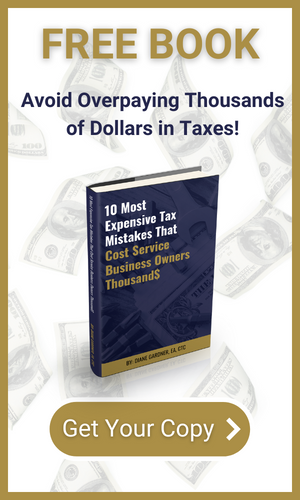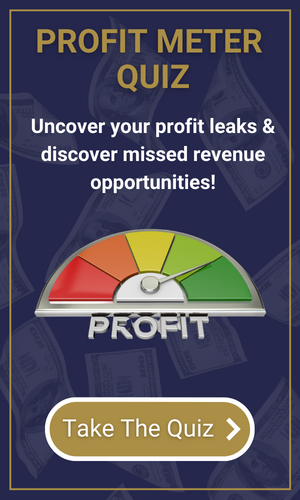To increase cash flow is the lifeblood of your business. The amount of cash you have on hand each month can either make you feel ‘the crunch’ and bring on stress or allow you to feel like you can breathe easy knowing you are successfully working on your plan.
But that relief, oftentimes, is short-lived. The cash flow rollercoaster is real, even for larger service businesses. It can affect the decisions you make each day, what you invest in, and which marketing platforms you utilize. It can also affect your bottom line net profit without you realizing it.
Many of the service businesses I work with have decided they need to have 3-6 months of operating cash on hand to cover the necessary monthly expenses. We know there should always be some sort of sales coming in each month, so this money should stretch beyond the original 3-6 month time period. (In Profit First we call this your Emergency Fund.)
There are steps you can take to increase cash flow and create consistent growth to prevent those ebbs and flows.
Here are some questions you can ask yourself regarding short and long-term credit and cash.
- Do you have a credit line, with a low-interest rate, that can be tapped into in an emergency? It’s helpful to have and prevents you from using high-interest credit cards. But make sure you have the plan to pay it off quickly as debts can easily creep up. Please do not use it ongoing, only in case of emergency.
- Are your credit cards paid off and is the credit available if needed? It’s nice to have as a backup, but remember, the interest fees dig into your profits! (In my coaching programs, our members work to pay all credit cards in full each month.)
- What about long-term financing – is your business creditworthy now? If not, what can you do to get to this position? When you really need to borrow money, it may not be possible but often you can borrow money when you don’t need it.
- Long-term loans – do you need to refinance and adjust interest rates? Talking to your bank to negotiate terms can save you a ton in fees. And what you do save, consider using it to pay down other debt or credit cards.
- Accounts receivable – how much do your customers owe you? Knowing those numbers on a regular basis is vital. Are they paying timely each month?
- Are you actively working to collect accounts receivable? It’s easy to be complacent, but having a plan to actively collect affects your cash flow (and your profits) and is money in the bank!
- Is there a way to change how you get paid – get your customers to pay you upon completion of the job or can you require an up-front deposit? What about implementing a subscription model in your business?
- Do you have equipment or vehicles sitting around and not being used? These assets may be turned into additional cash that could be used to pay down debt or deposit the funds into your Emergency Fund.
- Do you have leftover job materials that can be returned for refunds or credit against a future job? Do you have a schedule for assessing your inventory to make sure that you aren’t sitting on any unnecessarily? After all, that is money in the bank!
- Have you analyzed your business to look for inefficiencies in the way your team is working? This area is often a big profit leak in the service businesses I work with.
These are only 10 small areas that you can look into NOW, to find ways that you can prevent cash flow issues and ensure there is money available in case of emergencies.
In the Profit Implementer Program, we look at more areas to manage cash flow, discover profit leaks, and boost revenue.
If you need help opening up your cash flow, book a Profit Planning Session and we’ll discover areas in your business where you can find profit leaks.




